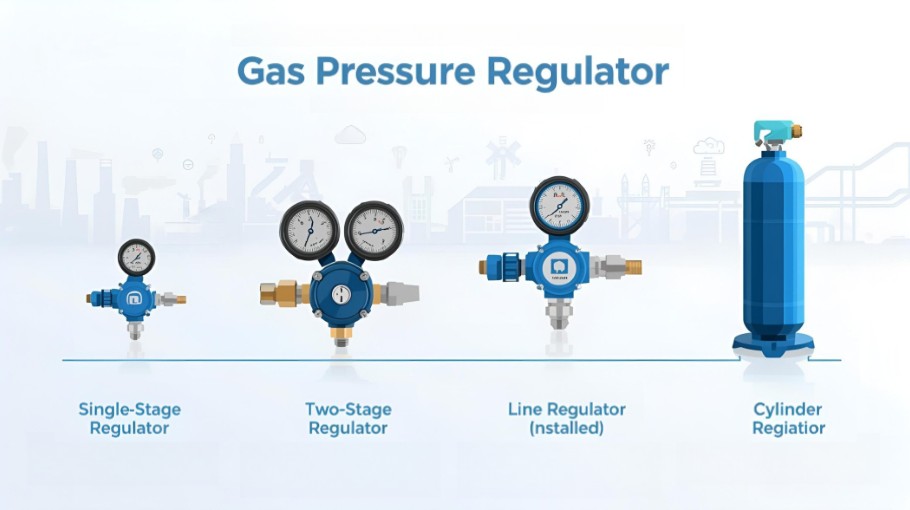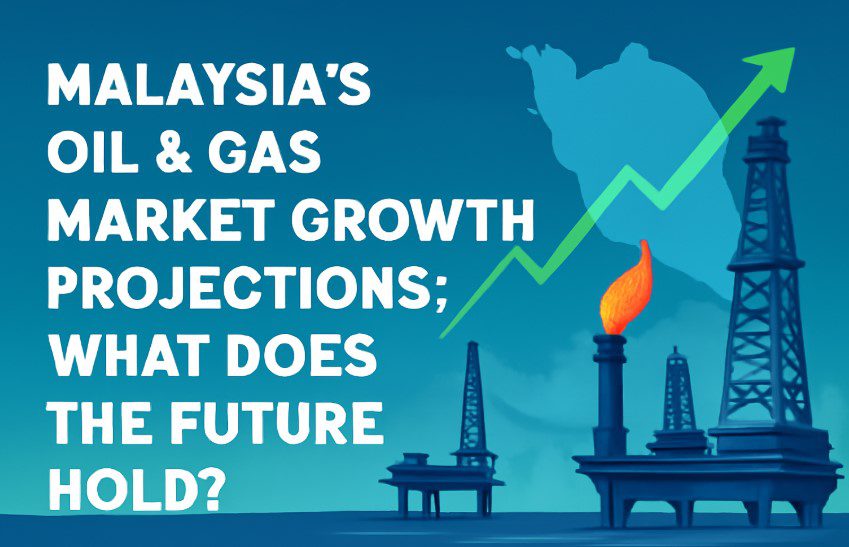Gas Pressure Regulators in Malaysia: A Complete Guide

A gas pressure regulator is one of the most critical safety and efficiency components in gas systems. Whether for industrial, commercial, or domestic use, regulators ensure that pressurised gas is delivered at a safe and usable level.
In Malaysia, where gas is widely used in manufacturing, laboratories, restaurants, and households, understanding how gas pressure regulators work — and choosing the right type — is essential for both safety and compliance.
For a deeper dive into applications, see our Gas Pressure Regulator Industrial Process Guide.
What Is a Gas Pressure Regulator?
A gas pressure regulator is a mechanical device that reduces high-pressure gas from a cylinder or pipeline into a lower, usable pressure for appliances or systems.
Without regulators, gas would flow at unsafe levels, potentially causing equipment damage, leakage, or explosions.
Browse our full range of Gas Pressure Regulators for industrial and household needs.
Why Are Gas Pressure Regulators Important in Malaysia?
- Safety Compliance – Malaysian regulations require gas systems to be equipped with safety mechanisms, including regulators, to prevent accidents.
- Energy Efficiency – Correct regulation reduces wastage and ensures equipment operates at optimal performance.
- Versatility – From LPG used in households to high-pressure industrial gases, regulators are tailored for specific applications.
How Does a Gas Pressure Regulator Work?
Although designs may vary, most regulators share the same working principle:
- High-Pressure Inlet: Gas enters the regulator from a cylinder or supply line.
- Valve & Seat Mechanism: A valve reduces pressure by restricting gas flow.
- Diaphragm & Spring: The diaphragm senses outlet pressure and works against a spring to maintain stability.
- Controlled Outlet: Gas exits at a consistent, safe pressure suitable for appliances.
Learn more about High Pressure Gas Regulators: Benefits & Uses.
Types of Gas Pressure Regulators
1. Single-Stage Regulators
- Reduce pressure in one step.
- Compact and affordable.
- Best for applications with stable inlet pressure (e.g., household LPG stoves).
2. Two-Stage Regulators
- Reduce pressure in two steps (high → medium → low).
- Provide more stable output.
- Common in laboratories, welding, and sensitive equipment.
3. Line Regulators
- Installed in gas pipelines.
- Maintain steady pressure for systems with multiple outlets.
4. Cylinder Regulators
- Attached directly to gas cylinders.
- Used in industrial and medical gas supply.
See our Gas Pressure Regulator Selection Guide for help choosing the right type.
Comparison: Types of Gas Pressure Regulators
Type | How It Works | Best For | Pros | Cons |
Single-Stage | Reduces pressure in one step | Household LPG, simple equipment | Affordable, compact | Less stable if inlet pressure fluctuates |
Two-Stage | Reduces pressure in two stages | Welding, labs, sensitive tools | Consistent output, safer | More expensive, larger size |
Line | Installed in pipelines | Multi-outlet gas systems | Maintains steady flow | Not for portable use |
Cylinder | Fits directly on gas cylinders | Medical oxygen, industrial cylinders | Easy to install, versatile | Needs correct type for each gas |
For a detailed breakdown of regulator choices, see our Gas Pressure Regulator Selection Guide.
Applications of Gas Pressure Regulators in Malaysia
- Household Use – LPG stoves, water heaters.
- Food & Beverage Industry – Gas grills, ovens, carbonation equipment.
- Manufacturing – Welding, cutting, and heat treatment processes.
- Healthcare – Medical oxygen supply for hospitals and clinics.
- Laboratories – Precision regulation for research and testing.
- Oil & Gas Sector – Pressure control in pipelines and refining operations.
Curious about LPG? Read: Are All LPG Gas Regulators the Same?
Choosing the Right Gas Pressure Regulator
When selecting a regulator in Malaysia, consider:
- Type of Gas – LPG, oxygen, nitrogen, CO₂, hydrogen, etc.
- Pressure Range – Ensure compatibility with inlet and outlet pressure requirements.
- Flow Rate – Match regulator capacity with your application.
- Material & Durability – Brass, stainless steel, or aluminium depending on gas type.
- Safety Standards – Look for regulators certified to Malaysian and international standards (e.g., SIRIM, ISO).
- Maintenance Support – Choose suppliers who provide after-sales service and calibration.
Explore our Gas Pressure Regulator Products and Regulator Category to find suitable solutions.
Safety Considerations for Gas Regulators
- Always install regulators according to manufacturer’s instructions.
- Inspect regularly for wear, cracks, or leaks.
- Do not interchange regulators between gases (e.g., LPG regulator cannot be used for oxygen).
- Replace regulators that show signs of malfunction immediately.
- Ensure installation by trained personnel to meet Malaysian safety regulations.
Learn about Common Gas Regulator Problems & How to Fix Them.
Gas Pressure Regulators in the Malaysian Market
In Malaysia, gas regulators are commonly supplied by:
- Local distributors of LPG and industrial gases.
- Specialised safety equipment suppliers.
- International manufacturers with SIRIM-certified products.
For trusted local solutions, visit Comet Integrated.
Frequently Asked Questions (FAQ) About Gas Pressure Regulators
Do all gas appliances in Malaysia require a pressure regulator?
Yes. From LPG cylinders to industrial gas systems, regulators are essential for safe operation.
How often should I replace a gas pressure regulator?
Household LPG regulators should typically be replaced every 5 years, while industrial regulators depend on usage and maintenance schedules.
Can I use the same regulator for different gases?
No. Each regulator is designed for specific gas types. Using the wrong one may cause leaks or explosions.
Are Malaysian households legally required to use certified regulators?
Yes. Regulators must comply with SIRIM standards to ensure safety.
What is the difference between a single-stage and two-stage regulator?
Single-stage regulators are cheaper and compact, but two-stage regulators provide more stable pressure for sensitive applications.
Conclusion
A gas pressure regulator is more than just a convenience — it is a critical safety device for homes, businesses, and industries in Malaysia. By understanding how regulators work, the types available, and proper safety practices, you can ensure both compliance and efficiency.
If you’re sourcing gas pressure regulators in Malaysia, explore our complete product selection or contact Comet Integrated for expert advice.



